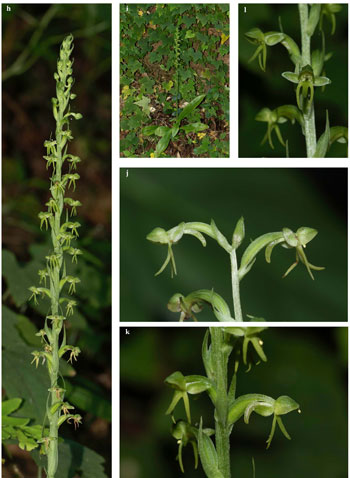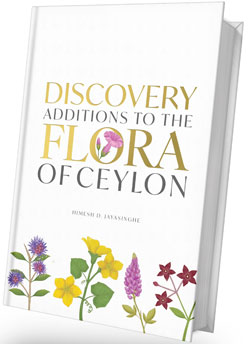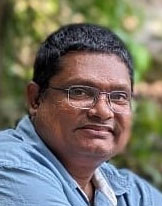Of the wild and beautiful, a book for the ages
View(s): Books on Sri Lanka’s amazing biodiversity are hardly a rarity nowadays. But July 22 will see the launch of a book that is genuinely a once-in-a-century event: Dr. Himesh Jayasinghe’s ‘Discovery: Additions to the Flora of Ceylon’. Encompassing almost 700 pages and illustrated with more than 400 colour photographs, the work presents more than 200 species of Sri Lankan flowering plants.
Books on Sri Lanka’s amazing biodiversity are hardly a rarity nowadays. But July 22 will see the launch of a book that is genuinely a once-in-a-century event: Dr. Himesh Jayasinghe’s ‘Discovery: Additions to the Flora of Ceylon’. Encompassing almost 700 pages and illustrated with more than 400 colour photographs, the work presents more than 200 species of Sri Lankan flowering plants.
The Smithsonian-funded ‘Flora of Ceylon’ project of the 1980s and ’90s, as well as the National Conservation Review of the latter decade, saw dozens of botanists both local and foreign exploring our dwindling forests in search of plants. They were unable to locate living specimens of some 180 species previously described. When the ‘National Red List’ came to be written in 2012, these 180 species were listed as functionally extinct: they had not been recorded from anywhere in the island for more than a century.
Then strode into the field of botanical exploration an unlikely champion in the form of Dr. Himesh Jayasinghe, a research fellow at the National Institute of Fundamental Studies. A decade ago, he began a methodical survey of Sri Lanka’s flora, exploring one patch of forest after another, for days and nights on end, in sunshine and shower. By the time the 2020 edition of the ‘National Red List’ was compiled, he had rediscovered no fewer than 50 of the 180 species until then thought to be extinct. Good news is a rarity for those of us who are associated with biodiversity conservation in Sri Lanka, and this spate of rediscoveries was very good news indeed.
Professor Nimal Gunatilleke first drew my attention to Himesh’s work, adding “He’s a once-in-a-century phenomenon, Rohan. I don’t think there’s been such a gifted taxonomic botanist in Sri Lanka since Trimen.” Henry Trimen (1843-1896), Sri Lanka’s last great botanical explorer, was director of the Royal Botanic Gardens at Peradeniya from 1880-1896. He described more than a hundred new species of flowering plants from the island and went on to publish the monumental six-volume ‘A handbook to the flora of Ceylon’ (1893-1931; completed posthumously).
Professor Gunatilleke is not one given to hyperbole. So, Hiranya Sudasinghe, with whom I was then writing ‘Ecology and Biogeography of Sri Lanka’, arranged for Himesh and me to meet. I was immediately struck by his modest, self-effacing character. It took barely an hour’s conversation for me to realize that I was in the presence of an extraordinary mind, the like of which I had never encountered before. His grasp of the Sri Lankan flora, which comprises after all, of more than 3000 species, was encyclopaedic. Clearly, he had a phenomenal visual memory: he could recall at will, for example, the obscurest of details from Dassanayake & Fosberg’s 15-volume, 7000-page ‘Revised Handbook to the Flora of Ceylon’.
 I learned that Himesh was self-funded, financing his field work with income from environmental impact assessments and like projects, thanks largely to the patronage of Professor Devaka Weerakoon. Having obtained his permission, Professors Siril Wijesundera, Nimal Gunatilleke and I approached Dilmah Conservation, requesting them to endow Himesh with a monthly stipend to cover his field expenses. Once we made our case, they agreed enthusiastically, relieving Himesh of future financial worries.
I learned that Himesh was self-funded, financing his field work with income from environmental impact assessments and like projects, thanks largely to the patronage of Professor Devaka Weerakoon. Having obtained his permission, Professors Siril Wijesundera, Nimal Gunatilleke and I approached Dilmah Conservation, requesting them to endow Himesh with a monthly stipend to cover his field expenses. Once we made our case, they agreed enthusiastically, relieving Himesh of future financial worries.
Those investments were soon rewarded with the continuing discovery of ever more of those long unseen ‘extinct’ species. More than 100 of them have been re-discovered up to now, many of them exceedingly rare and localized. But that was not the end of the story. In the course of his explorations, Himesh discovered more than 200 species that were altogether new to the flora of Ceylon (stemming from a long tradition, botanists persist in using ‘Ceylon’ for ‘Sri Lanka’ when it comes to the island’s flora).
What’s more, most of these are likely to be endemic. Himesh supported each of these discoveries not only with superb photographs but by one or more preserved specimens which he deposited in the National Herbarium at Peradeniya, some 3600 up to now. As for the data, they were all stored in his trusty if somewhat battered PC.
“What will happen to all that data if, God forbid, you get run over by a tuk-tuk?” I inquired, with my customary lack of tact. Himesh shrugged. The thought hadn’t occurred to him

Himesh Jayasinghe
That was the moment we decided that all this information simply had to be put in the public domain through the publication of a book. Once more, Dilmah came to our aid and offered to publish it. Our main concern was that the book should be affordable to anyone in Sri Lanka, especially to students.
About 75% of the book is devoted to photographs, with full-page portraits of dozens of the most spectacular wildflowers you are likely ever to see. None of these has ever been photographed before. Also included are photos of another 200 species, included for purposes of comparison.
Whether or not you are into botany, this is a book that should bring tears to the eyes of everyone who loves this country for its unique and wondrous bounty of natural resources. It is a book for the ages, one that will still be studied and browsed a century from now.
The hardcover book is available at Rs 6900 (a 40% discount in a prepublication special offer).
| BOOK REVIEW | |
| Discovery: Additions to the Flora of Ceylon- by Himesh Jayasinghe Hardcover, pp -680 Reviewed by Rohan Pethiyagoda |
Searching for an ideal partner? Find your soul mate on Hitad.lk, Sri Lanka's favourite marriage proposals page. With Hitad.lk matrimonial advertisements you have access to thousands of ads from potential suitors who are looking for someone just like you.


